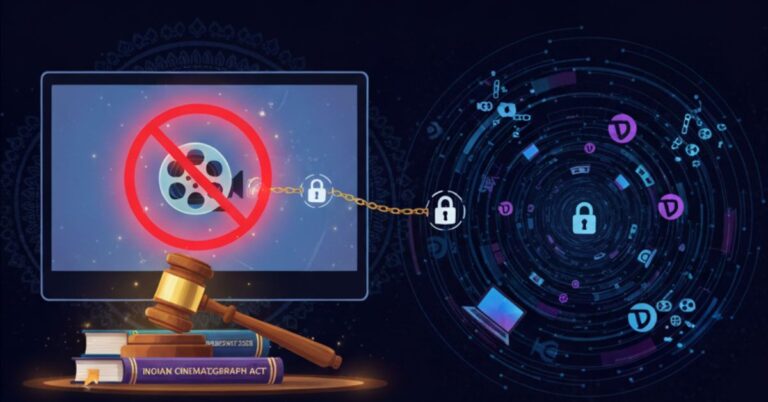INTRODUCTION
The Supreme Court on 12th July 2022, in Vidarbha Industries Power Ltd. v Axis Bank Ltd. [1] held that Section 7(5)(a) of the Insolvency & Bankruptcy Code (“IBC”) is directory. Enunciating on the same, the Supreme Court held that National Company Law Tribunal (“NCLT”) can reject an application even if the financial creditor fulfills the twin test of establishing “debt” and “default” on the part of the corporate debtor. While a Review Petition was filed against the said judgment due to the untoward path taken, the same was rejected by the Supreme Court. The case analysis seeks to understand the position as adopted by various forums in the present case and seeks to critique the Supreme Court judgment as being violative of the objectives of the IBC. The analysis also tests for the sustainability of this position in the insolvency regime of India in times to come.
BRIEF FACTS OF THE CASE
Axis bank being the financial creditor of Vidarbha Industries filed an application under Section 7(2) before the NCLT, Mumbai for institution of Corporate Insolvency Resolution Process (“CIRP”). In response, Vidarbha Industries filed a Miscellaneous Application No. 570 of 2020 in C.P. (IB) No. 264 of 2020 before the NCLT seeking stay on proceedings under Section 7 of the IBC in the NCLT as long as Civil Appeal No. 372 of 2017 was pending in the Supreme Court.
Vidarbha Industries averred that it was power generating company operating a 600 MW Coal-fired Thermal Power Plant in Maharashtra and had been supplying power to Reliance Infrastructure Ltd. (“RIL”) since 1st April 2014 as per various agreements approved by the Maharashtra Electricity Regulatory Commission (“MERC”). In 2016, Vidarbha Industries filed an application before MERC for truing up the Aggregate Revenue Requirement and for determination of tariff due to increase in fuel costs and cost of procuring coal. MERC disposed off the application in June 2016, by disallowing substantial portions of the fuel costs for financial years (2014-15, 2015-16) and additionally capped the said tariff for (2016-17 to 2019-20). An Appeal was filed before the Appellate Tribunal for Electricity (“APTEL”) which was allowed. Hence Vidarbha Industries claimed that an amount of INR 1,730 Crores (Indian Rupees One Thousand Seven Hundred and Thirty Crores only) is due as per the order passed by APTEL. Though MERC has challenged the said order by way of an Appeal before the Supreme Court, the same is pending adjudication. Hence, in its Miscellaneous Application for stay Vidarbha Industries stated that it was financially healthy and due to unwanted financial stress due to the pending Appeal, debts could not be paid. The NCLT dismissed the stay application by holding Section 7 to be mandatory in its wording and hence Vidarbha Industries approached the NCLAT.
The NCLAT held that the issue of liquidity as raised by Vidarbha Industries cannot impact the admission of Application under Section 7 of the IBC when the twin test of existence of a debt and default to pay the debt is proven. The said decision was finally brought before the Supreme Court and the question raised was “whether Section 7(5)(a) is mandatory or a discretionary provision?”
SUPREME COURT JUDGMENT
Vidarbha Industries’ Stance
Vidarbha Industries basis the facts stated that the only reason for the existence of debt was the pending appeal and once the same is adjudicated in its favor, it would realize a sum of INR1,730 Crores (Indian Rupees One Thousand Seven Hundred and Thirty Crores only) and would be able to satisfy the debt. Basis the law, it was strongly contended that a perusal of Section 7(5)(a) indicates the use of “may” when admitting an application for initiating the CIRP process.
Hence, Vidarbha Industries averred that the NCLT can reject an application even if there is existence of debt for meeting the ends of justice and achieving the true objective of the IBC, i.e., revival of the company and value maximization.
Axis Bank’s Stance
Solely relying on the statute, Axis Bank Ltd. vehemently argued that once default in payment of dues has been admitted, application must be allowed. While relying on Swiss Ribbons Pvt. Ltd. & Anr. v Union of India & Ors. [2] it was contended that the legislative policy as established by the IBC was to shift from “inability to pay debts” to “determination of default.” It was further stated that the adjudicating authority under Section 7 was merely required to ascertain existence of default within 14 days of receipt of such application and if the default was found, the adjudicating authority should allow the application.
It was concludingly argued that the said section was mandatory in nature and pointed out that since the application being instituted in the NCLT, one year had lapsed and there was no change in the solvency of Vidarbha Industries.
JUDGMENT OF THE SUPREME COURT
The Supreme Court stated that both the previous fora as per the requirements of Section 7 of the IBC had only observed whether a debt and requisite default had occurred. It concluded that both the institutions had not entered into the merits of the matter. While not agreeing with the view taken by the previous forums, the Supreme Court held that the award of the ATEPL cannot completely be disregarded, and the viability and overall financial health of Vidarbha Industries cannot be held as extraneous matters.
While holding that the use of the word “may” under Section 7(5) to be directory, the Supreme Court stated that the rule of literal construction must be taken into consideration while viewing statutes.
The Supreme Court also enumerated the difference between the CIRP Proceedings lodged by an Operational Creditor and Financial Creditor. While the former under Section 9(5) having filed an application “shall” be allowed to initiate CIRP upon existence of debt and default therein, the latter “may” be permitted to do the same if the tribunal is satisfied that no other reasons preclude the application from being allowed as was seen in the present case.
Due to these reasons, the Orders as passed by the NCLT and NCLAT were set aside by the Supreme Court holding Section 7(5)(a) to be directory and providing flexibility to the tribunals to pass the application upon consideration of facts and circumstances beyond the presence of a debt and default of the same thereon.
CRITICAL ANALYSIS
Intent of the IBC is lost
The intent of the IBC as recognized under M/s. Innoventive Industries v ICICI Bank [3] and Swiss Ribbons (supra) is the resolution of insolvency in a time bound manner. The reading as given to the statute was incorrect because precedents of the Supreme Court clearly enumerate that upon existence of debt and default thereof the application must be allowed. The only exception as enumerated by the statute is there being an incomplete application or disciplinary proceedings pending. In absence of these two, the application will have to be passed without question. In the represented factual matrix, there had been a delay of more than a year since the application was filed and due to pendency of appeal no action was taken which could not have been the objective of the IBC when envisioned.
Difference between Operational Creditor and Financial Creditor Unwanted
The Supreme Court without relying on cognizable data or precedent in the matter held that non-payment of dues to the Operational Creditor has more impact than to a Financial Creditor. Such a difference is uncalled for due to Financial Creditors being the bedrock of the economy. If their dues are not cleared in time, the economy at large would suffer. The attempt at differentiation is incorrect since the pedestal given to the Financial Creditors as enumerated within the judgment of Swiss Ribbons (supra) and Committee of Creditors of Essar Steel India Ltd. v Satish Kumar Gupta & Ors. [4] It is also averred that when the IBC was enacted, the legislature willfully prescribed two ways in which the default or existence of debt must be proven by the Financial Creditor and Operational Creditor. By putting them on the same pedestal, the Court actually seeks to travel back to the era prior to the enactment of IBC.
Chaotic Courts
While the Supreme Court unsettled the principle as found in Section 7(5)(a) of the IBC, the brunt is being faced by parties in the NCLT and NCLAT in various decisions. In Bank of Maharashtra v Newtech Developers & Developers Pvt. Ltd. [5] having concluded the existence of debt and default thereof, CIRP application was not entertained on the ground of homebuyers being affected. On the other hand, in IndusInd Bank Ltd. v Hacienda Projects Pvt. Ltd. [6] even though the threshold for initiating the CIRP process was fulfilled, the adjudicating authority basis the financial health of the company rejected such initiation even after finding that the twin test of debt and default were proven. Hence, post the judgment it has become difficult for forums to decide on the maintainability of an application and this completely obliterates the ethos of the IBC.
REVIEW PETITION
A Review Petition was filed against the judgment pronounced by the Supreme Court stating the overlooking of law as passed by the Supreme Court in ES Krishnamurthy v Bharath Hi-Tech Builders Pvt. Ltd. [7] It was alleged that per this judgment, the law permitted only two options to any adjudicating authority in line with Section 7, i.e., to admit the application or reject the same. It did not allow for any other exigencies. The Supreme dismissed the Review Petition by holding that the case as mentioned dealt with a settlement as being imposed by the adjudicating authority which was not permitted.
A CONTRARY VIEW TO VIDARBHA INDUSTRIES
The Supreme Court in M. Suresh Kumar Reddy v Canara Bank & Ors. [8] while taking a relook at the Review Petition filed in Vidarbha Industries, iterated that the said judgment had been passed basis the facts and circumstances of that case. Hence, the Supreme Court held that the mandatory nature of Section 7 as enumerated by Innoventive Industries would still hold good.
CONCLUSION
The decisions of the Supreme Court in Vidarbha Industries and Suresh Kumar Reddy are at odds. While one holds the extent of Section 7 to be mandatory, the other holds it to be directory. This conundrum could be solved by a bench of larger strength or by the legislature. The legislature has hence formed an opinion that the Vidarbha Industries judgment needs to be overturned and the same was communicated by issuance of notice (File No. 30/38/2021) [9] dated 18.01.2023. By way of notice dated 18th January2023, invitation of comments on changes being considered to the IBC were sought from the public. Clause 3.2 of the said comments indicated that the said judgment had caused many doubts and to alleviate the same, Section 7 was sought to be amended to clarify that while considering an application in it, the Adjudicating Authority is only required to observe the twin test being fulfilled and nothing more. When the same is established, the CIRP must be compulsorily instituted.
Nikhilesh Koundinya, Associate, Solomon & Co.
About Solomon & Co.
Solomon & Co. (Advocates & Solicitors) was founded in 1909 and is amongst India’s oldest law-firms. The Firm is a full-service firm that provides legal service to Indian and international companies and high net-worth individuals on all aspects of Indian law.
“Disclaimer”
The information contained in this article is intended solely to provide general guidance on matters of interest for the personal use of the reader, who accepts full responsibility for its use. The application and impact of laws can vary widely based on the specific facts involved. As such, it should not be used as a substitute for consultation with a competent adviser. Before making any decision or taking any action, the reader should always consult a professional adviser relating to the relevant article posting.
[1] 2022 SCC OnLine SC 841
[2] (2019) 4 SCC 17
[3] Civil Appeal Nos. 8337-8338 of 2017
[4] Civil Appeal Nos. 8766-8767 of 2019
[5] C.P. (IB) No. 2465/NCLT/ND/2019
[6] C.P. (IB) No. 419/NCLT/ND/2022
[7] (2022) 3 SCC 161
[8] Civil Appeal No. 7121 of 2022
[9] https://www.mca.gov.in/content/dam/mca/pdf/IBC-2016-20230118.pdf





